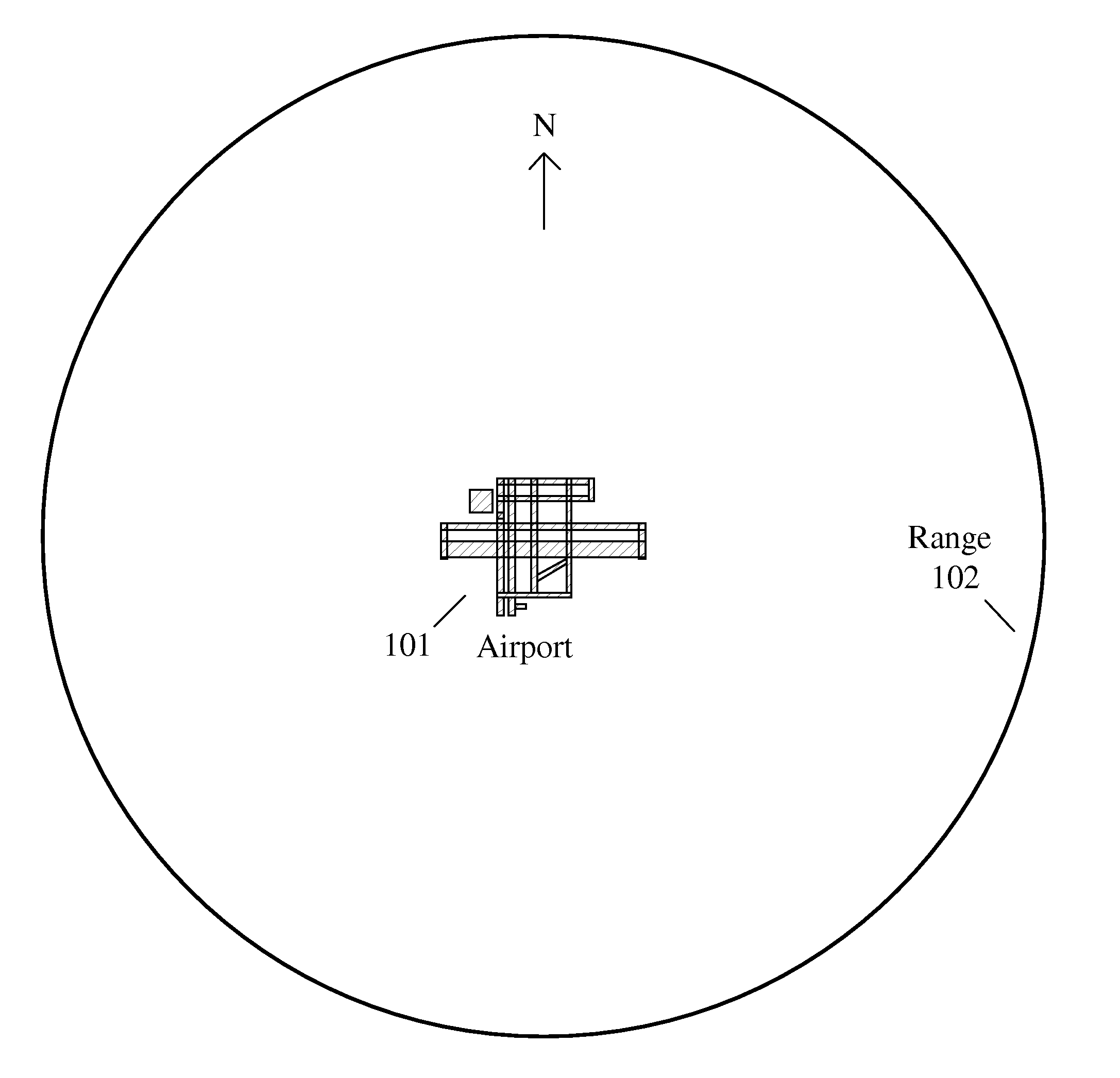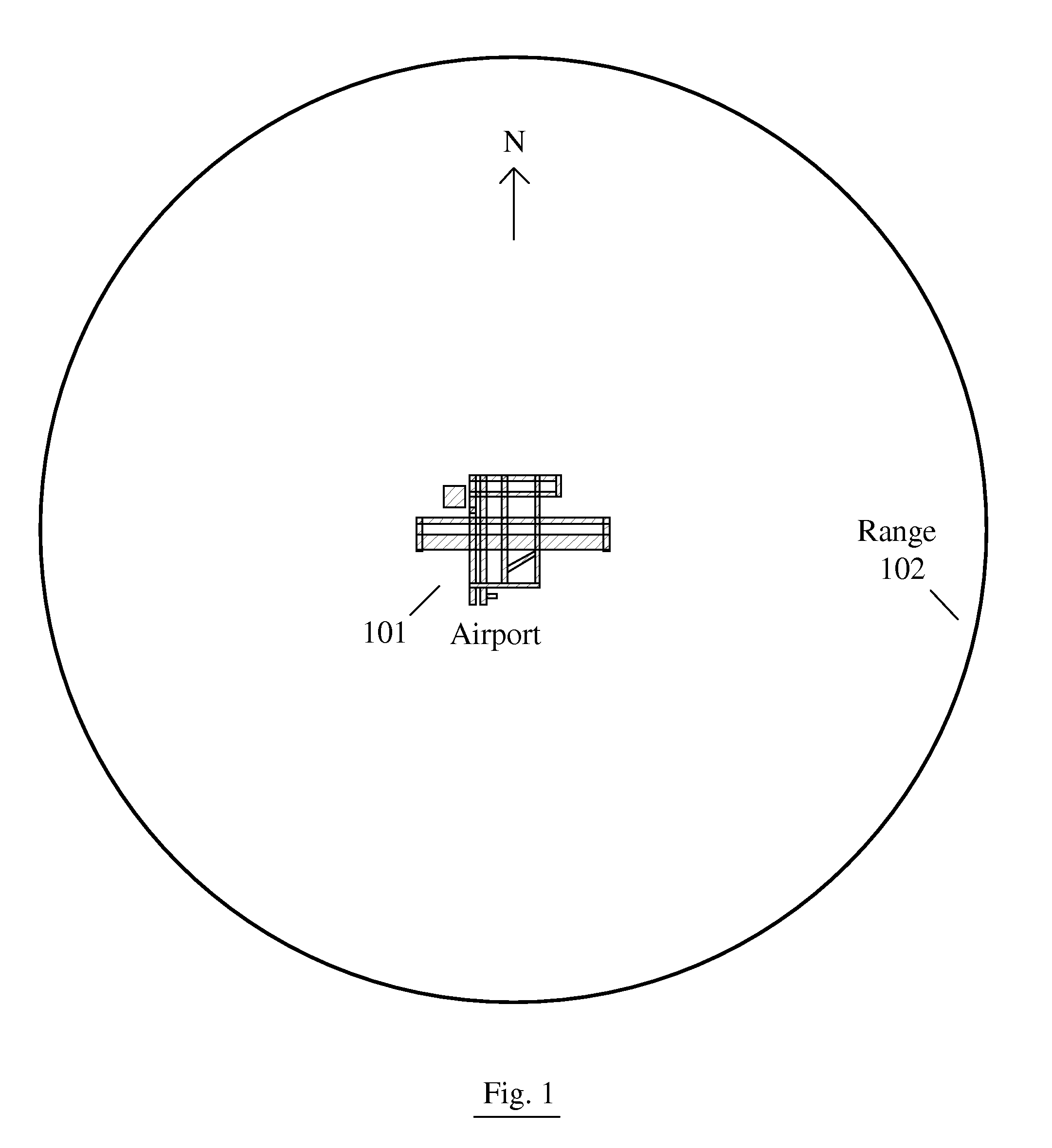System and method for safely flying unmanned aerial vehicles in civilian airspace
a technology for civilian airspace and unmanned aerial vehicles, which is applied in process and machine control, instruments, navigation instruments, etc., can solve the problems of inconvenience for other traffic and disrupt the national airspace system, and achieve the effect of enhancing synthetic vision
- Summary
- Abstract
- Description
- Claims
- Application Information
AI Technical Summary
Benefits of technology
Problems solved by technology
Method used
Image
Examples
Embodiment Construction
[0069]In the following description, numerous specific details are set forth to provide a thorough understanding of the invention. However, it is understood that the invention may be practiced without these specific details. In other instances well-known circuits, structures, and techniques have not been shown in detail in order not to obscure the invention.
[0070]FIG. 1 shows a Distance Range 102 around Airport 101. While a circular area is shown for convenience any area whose shape can be defined may be used such as a square, rectangle, or other polygon. While FIG. 1 shows the area around an airport any other designated location may be specified. FIG. 2 shows an altitude profile of the airspace surrounding Airport 101. When the UAV is within Distance Range 102 of Airport 101 at an altitude below Selected Altitude 201 the UAV must be flown by a remote pilot using a Synthetic Vision System such as the one taught by U.S. Pat. No. 5,904,724 Method and apparatus for remotely piloting an ...
PUM
 Login to View More
Login to View More Abstract
Description
Claims
Application Information
 Login to View More
Login to View More - R&D
- Intellectual Property
- Life Sciences
- Materials
- Tech Scout
- Unparalleled Data Quality
- Higher Quality Content
- 60% Fewer Hallucinations
Browse by: Latest US Patents, China's latest patents, Technical Efficacy Thesaurus, Application Domain, Technology Topic, Popular Technical Reports.
© 2025 PatSnap. All rights reserved.Legal|Privacy policy|Modern Slavery Act Transparency Statement|Sitemap|About US| Contact US: help@patsnap.com



